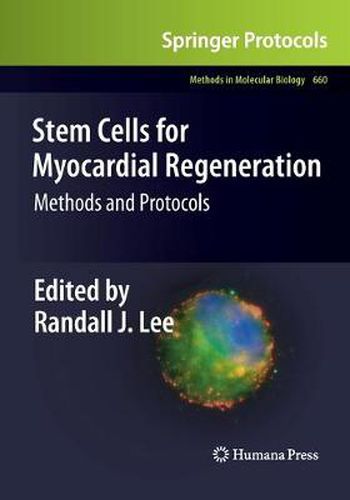Readings Newsletter
Become a Readings Member to make your shopping experience even easier.
Sign in or sign up for free!
You’re not far away from qualifying for FREE standard shipping within Australia
You’ve qualified for FREE standard shipping within Australia
The cart is loading…






This title is printed to order. This book may have been self-published. If so, we cannot guarantee the quality of the content. In the main most books will have gone through the editing process however some may not. We therefore suggest that you be aware of this before ordering this book. If in doubt check either the author or publisher’s details as we are unable to accept any returns unless they are faulty. Please contact us if you have any questions.
The feld of regenerative medicine is in its infancy state. Enthusiasm for the potential of organ regeneration lies with the potential pluripotency of stem cells to differentiate into various tissue types. This volume of Methods in Molecular Biology will focus on the use of stem cells for myocardial repair and regeneration. The emphasis of this issue will be to provide basic scientists, translational investigators, and cardiologists a means to evaluate the effcacy and safety of stem cells in a standardized fashion for myocardial regeneration. Many different cell types have been considered for myocardial repair. Adult card- myocytes are unable to survive even when transplanted into normal myocardium. The use of fetal or neonatal cardiomyocytes is not a feasible source of cells due to ethical concerns and donor availability. Therefore, the use of pluripotent stem cells has become the focus of a cell source for myocardial repair and regeneration. A variety of stem cell types have been suggested to participate in myocardial repair. This has led the investigators to search for the optimal cell type for myocardial repair . Reliable isolation of the cell source with the ability to expand the cell population is a prerequisite. In the frst section of this book, methods for isolation of commonly used stem cells being investigated for myocardial regeneration are presented. Once a stem cell source has been selected, the stem cell needs to be tested in an app- priate animal model before being translated into clinical practice.
$9.00 standard shipping within Australia
FREE standard shipping within Australia for orders over $100.00
Express & International shipping calculated at checkout
This title is printed to order. This book may have been self-published. If so, we cannot guarantee the quality of the content. In the main most books will have gone through the editing process however some may not. We therefore suggest that you be aware of this before ordering this book. If in doubt check either the author or publisher’s details as we are unable to accept any returns unless they are faulty. Please contact us if you have any questions.
The feld of regenerative medicine is in its infancy state. Enthusiasm for the potential of organ regeneration lies with the potential pluripotency of stem cells to differentiate into various tissue types. This volume of Methods in Molecular Biology will focus on the use of stem cells for myocardial repair and regeneration. The emphasis of this issue will be to provide basic scientists, translational investigators, and cardiologists a means to evaluate the effcacy and safety of stem cells in a standardized fashion for myocardial regeneration. Many different cell types have been considered for myocardial repair. Adult card- myocytes are unable to survive even when transplanted into normal myocardium. The use of fetal or neonatal cardiomyocytes is not a feasible source of cells due to ethical concerns and donor availability. Therefore, the use of pluripotent stem cells has become the focus of a cell source for myocardial repair and regeneration. A variety of stem cell types have been suggested to participate in myocardial repair. This has led the investigators to search for the optimal cell type for myocardial repair . Reliable isolation of the cell source with the ability to expand the cell population is a prerequisite. In the frst section of this book, methods for isolation of commonly used stem cells being investigated for myocardial regeneration are presented. Once a stem cell source has been selected, the stem cell needs to be tested in an app- priate animal model before being translated into clinical practice.